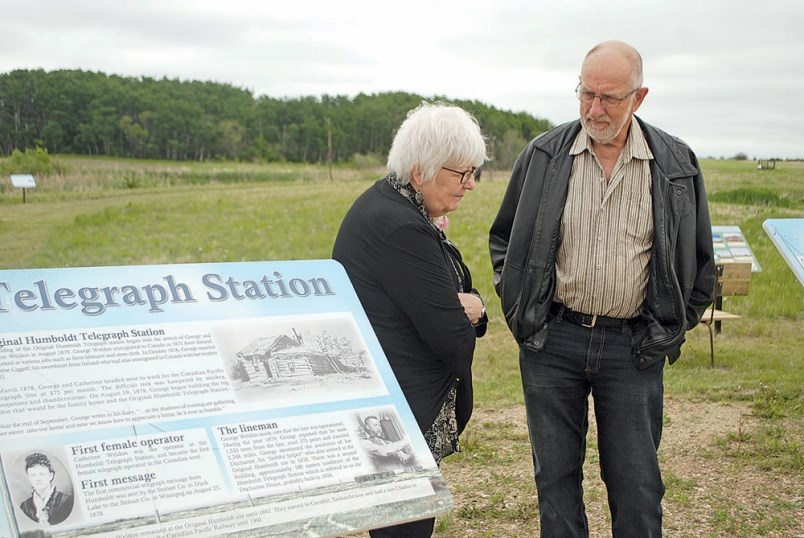The definition of traditional museums is changing with the times.
And Saskatchewan museums need to change with it.
That was the message during the Museums Association of Saskatchewan’s annual conference, Authentic Storytelling for the Future Narrative.
Around 100 Saskatchewan museum members from across the province were in attendance in Humboldt with the Humboldt and District Museum and Gallery playing host to the conference.
Members got tours of all of Humboldt’s cultural spaces to see how Humboldt is sharing their own story.
Tours included the water tower, Original Humboldt, and both the Humboldt and District Museum and Gallery.
Technology and social media are turning the traditional storytelling idea on its head, says Wendy Fitch Executive Director of Museums Association of Saskatchewan and museum staff are getting together to share ideas on how expand storytelling within their own museums.
“Museums are about the story just as much as they are about the things so that idea of storytelling is woven through all the sessions,” says Fitch.
The association also took the time to celebrate 50 years as an organization and how much they have grown. They started with 30 museums and now have around 250.
This evolution has been something that has always been important.
There are many examples of that throughout the years, says Fitch, including their collections database back in the 1990s and the standard for museum practice developed in the 1980s.
“We’ve always been a risk taker as an organization,” says Fitch.
New things are constantly being developed as museums continue to evolve, including some museums moving away from brick and mortar and being an online resource as well.
Fitch says they have two members of the association who only exist as a website.
This is the first time that the association has been joined by the Saskatchewan History and Folklore Society, and Keith Carlson with the society says this overlapping of themes has made for a wonderful partnership.
“Our focus has always been on the social history that people do in their communities and the folklore is the personal family stories, the remembrance.”
As a nation state, we learn about the history of Canada, but at the local level, we connect to our community through the stories of families and community, says Carlson.
From aboriginal peoples to our newest immigrants, the stories make a home.
“Our organization focuses on stories that are positive. That give people happiness. Even what are the happy places.”
A new step in the evolution of museums is eco-museums, says Fitch, where the people are the ones that tell the stories and decide what stories are told.
Fitch is excited to see this idea combine with virtual museums.




